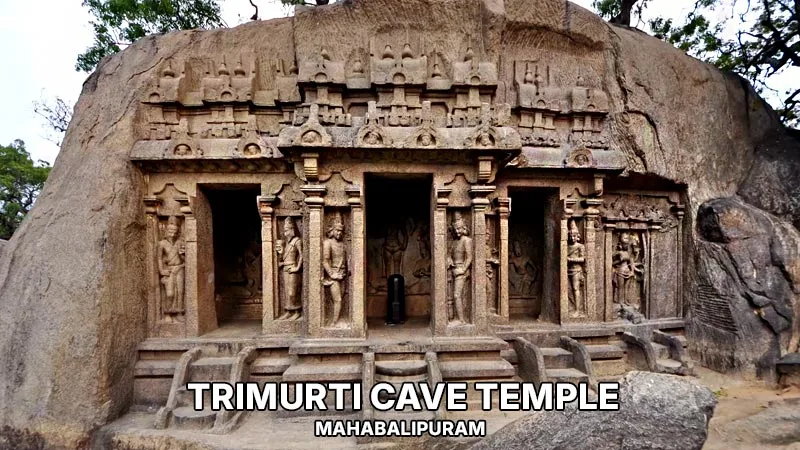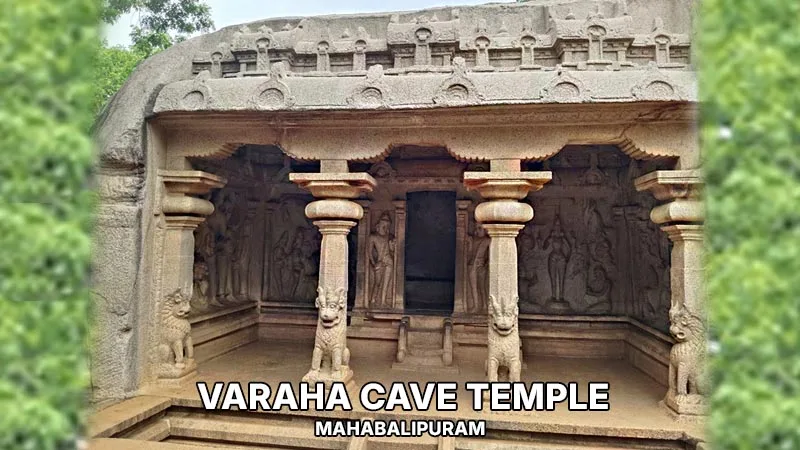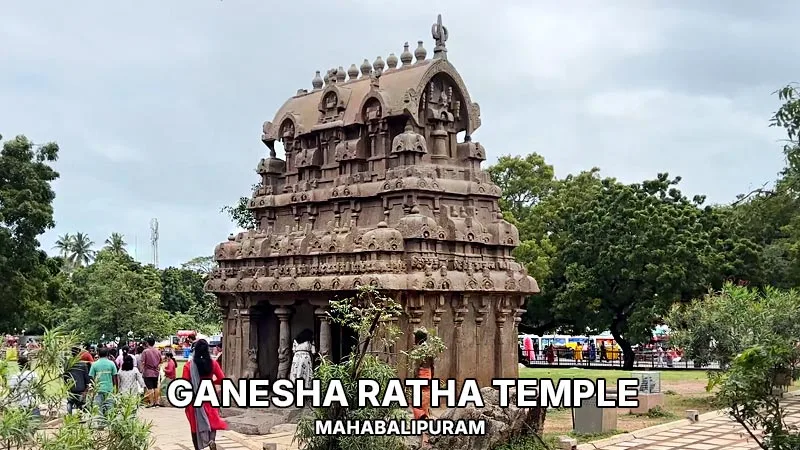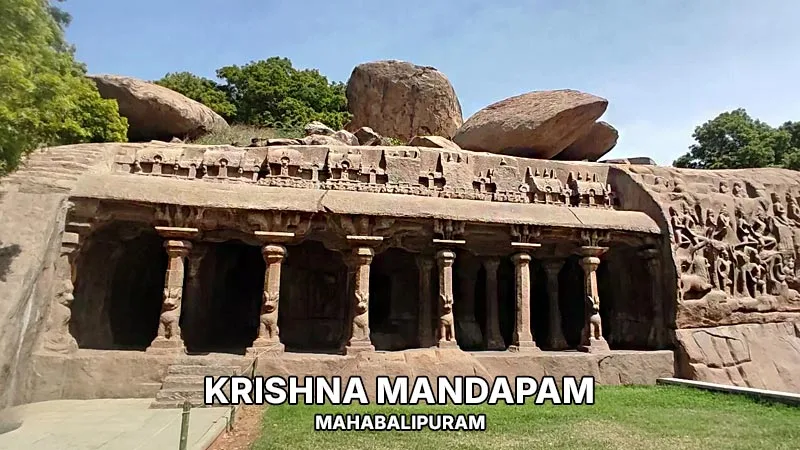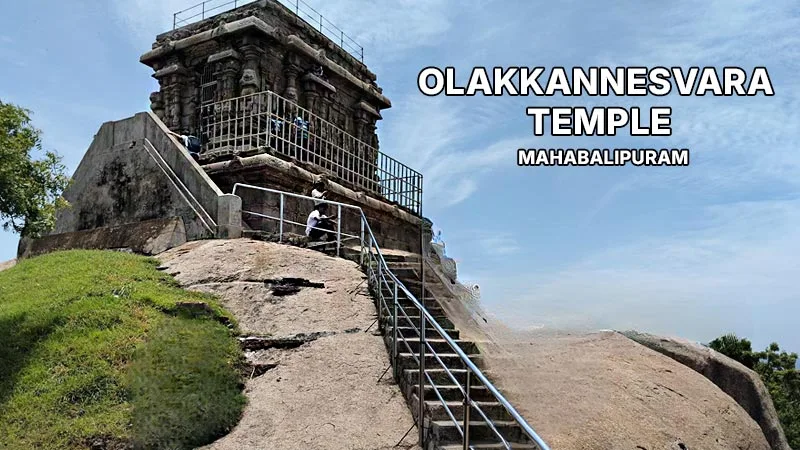The Pancha Rathas, or Five Rathas, in Mahabalipuram completely blew me away the first time I walked through their sandy compound.
Imagine standing in front of five massive rock-cut monuments, each carved from a single piece of granite more than 1,300 years ago—without any modern machinery.
These structures are more than just temples; they are experiments in architecture and design by the Pallava dynasty. Though they were never consecrated, their sheer artistry makes them feel alive.
The name “Pancha Rathas” refers to the five Pandava brothers from the Mahabharata and their wife Draupadi.
But here’s what I learned on my visit: these temples weren’t built for worship. Instead, they served as prototypes where artisans practiced styles that would influence South Indian temple architecture for centuries.
Contents
Visitor Information and Guidelines
| Information | Details |
|---|---|
| Location | Mahabalipuram, Tamil Nadu, India |
| Timings | 6:00 AM – 6:00 PM daily |
| Entry Fees | ₹10 (Indians), ₹250 (Foreigners), Free for kids under 15 |
| Best Time to Visit | November – February |
| Photography | Allowed and highly recommended |
| How to Reach | 1.5 km from Mahabalipuram Bus Station |
Pancha Rathas History: Who Built Them?
The Pancha Rathas were commissioned during the reign of Pallava king Narasimhavarman I (Mamalla) in the 7th century AD. The Pallava rulers were pioneers in transitioning from wooden structures to stone temples, and Mahabalipuram became their playground for experimenting with granite.
These monolithic wonders showcase early Dravidian architecture, and their unfinished state gives us a glimpse into the process of ancient craftsmanship.
Architecture and What I Noticed While Exploring
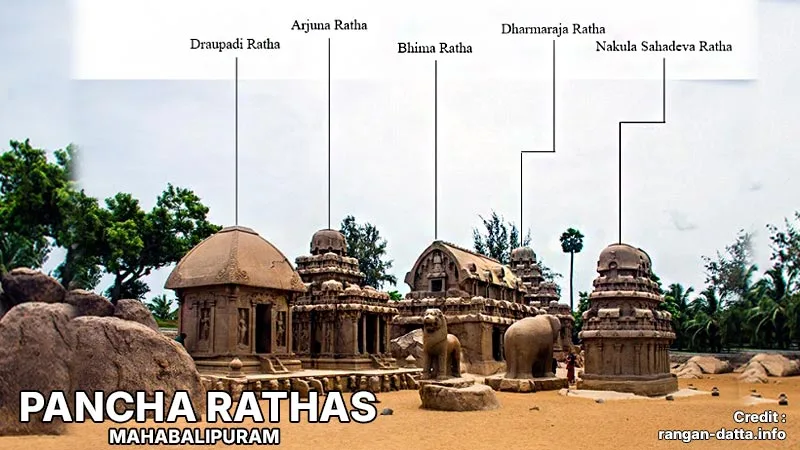
Each ratha (chariot-shaped monument) has its own story to tell:
1) Draupadi’s Ratha
The smallest of the five, Draupadi’s Ratha felt almost intimate. Dedicated to Goddess Durga, it reminded me of a simple village hut, yet the lion sculpture outside spoke of strength and power. Inside, I admired the delicate bas-relief of Durga standing gracefully on a lotus.
2) Arjuna’s Ratha
This temple honors Lord Shiva. The outer walls are covered in carvings of gods, animals, and humans. I loved spotting Vishnu with Garuda and Indra riding Airavata, his majestic elephant mount.
3) Nakula-Sahadeva’s Ratha
Facing Arjuna’s Ratha, this twin shrine is associated with Lord Indra. A life-sized stone elephant stands nearby, so lifelike I half expected it to move.
4) Bhima’s Ratha
This massive structure is dedicated to Bhima, the strongest Pandava brother. Its bold pillars and lion carvings suggest a grand design, but it remains unfinished.
5) Dharmaraja Yudhishthira’s Ratha
The tallest of the lot, this three-tiered temple is dedicated to Lord Shiva. As I circled it, I noticed intricate carvings like Ardhanarishvara (half-Shiva, half-Parvati) and thought about how these motifs influenced later South Indian temples.
What to Expect at Pancha Rathas?
Visiting the Pancha Rathas feels like entering an ancient outdoor museum. The open layout and sandy paths invite you to take your time and observe the details.
As I explored, the gentle sea breeze and quiet surroundings created a sense of calm. Unlike the Shore Temple, this site wasn’t crowded, which allowed me moments of complete solitude among these timeless creations.
Visitor Tips
✅ Best Time to Visit: Early mornings (6–8 AM) or late afternoons (4–6 PM) for soft light and fewer crowds.
✅ Hire a Guide: You’ll learn fascinating stories and spot carvings you might otherwise miss.
✅ Footwear: Wear comfortable shoes for walking on sandy and uneven paths.
✅ Hydration: Carry water, especially during warmer months.
My Personal Review
The Pancha Rathas didn’t feel like ruins—they felt like a living laboratory where ancient architects tested their ideas.
What stayed with me was the attention to detail: the lifelike elephant and lion statues, the symmetry of pillars, and the way sunlight danced across the carvings in the late afternoon.
If you love history or architecture, this site is a must-visit. Take your time, sit quietly for a few minutes, and imagine the sculptors at work here over a thousand years ago.
FAQs About Pancha Rathas
Who built the Pancha Rathas?
The Pallava king Narasimhavarman I (Mamalla) commissioned these rock-cut temples in the 7th century AD.
Why are they called Rathas?
“Rathas” means chariots in Sanskrit. Though shaped like chariots, they were not used for worship or transport.
Are the Pancha Rathas part of a UNESCO site?
Yes, they are part of the UNESCO World Heritage Sites in Mahabalipuram.
How much time is enough to explore?
Around 1–2 hours is ideal to explore and appreciate each Ratha in detail.

